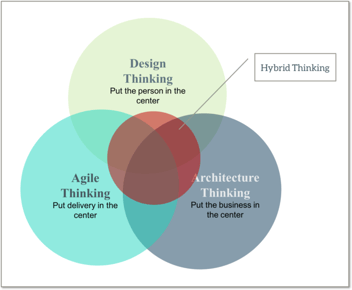A while back I attended a conference in the US that was promoting tools and techniques for formalising the description of business. The vision was to develop a standard language to describe modern organisations and provide a bridge between how strategy is realized into execution and operations, all interlinked and related in real-time. For now lets call this a digital “business” twin.
I personally believe there is huge value in using these formal tools to address the gap that exists between the unresolved business challenges, and the creation of more formal repeatable and replicable processes to exploit the “secret sauce” of the organizations. However, the challenge has always been to make these into an efficient value add, instead of a bottleneck of redundant and irrelevant information.
Roger Martin (no relation) has written a great book on the design of business where he talks about the movement through the knowledge funnel from validity to reliability. A key, and highly relevant, call out from this is the merging of the left and right brain thinking aspects. Where analytical and intuitive thinking come together into a symphony of improved experience and value for customers.
In this merged center its more about rules of thumb, heuristics, and less about formal descriptions of the business. Martin calls this space in the middle design thinking. The movement from right to left to identify the rules of thumb, in an easy to use and streamlined manner, using the wisdom of the crowd.
Let me explain, and I’ll use someone else’s words to do so. Two articles I recently came across that I think speak quite well to this, albeit from quite different perspectives or problem spaces. The first is from Stowe Boyd in an article titled “The Fall of collaboration, the rise of cooperation”:
“Consider the old school notions of business process, where the entire chain of work activities is mapped out by experts looking across many disciplines, with all the rules baked in, and everyone must be taught how to perform their roles and what degree of flex is allowed within the painted lines: that notion is being fractured. Things are changing too fast to devise a collection of end-to-end, top-down, totally designed business processes. Besides, anything that can be programmed is being handed off to algorithms, and the rest is left to humans to invent. Today, people are not blindly following rote instructions, but instead they reapply general principles ( HEURISTICS) to specific situations: they are not blindly stamping out license plates, or following a script”
This quote speaks clearly to the space in the middle that Martin and myself refer to as the rules of thumb space. The world, business and information are changing too fast. No sooner do you formalize the processes in your business then they are out of date and the cycle has to be repeated. Now I’m not saying there is no space for this formalization, I just believe that we need to up our game in this space and be able to move through the knowledge funnel far more efficiently as we seek to formalize heuristics further.
I don’t believe the current disciplines, processes and frameworks are able to do this due to what is referred to as “bounded rationality”. In other words each discipline is limited by the information they have available, as well as their own cognitive abilities to deal with this information. This is even more so in organisations with large teams of functional areas such as process engineers, architects, analysts, agile and lean practitioners etc. Each have their own heuristics on how to operate, and often these heuristics are in conflict with each other. This conflict creates complexity further downstream in the organization. And its often left to technology to try and catch and fix some of this complexity through integration and data analytics solutions.
This is echo’d by a quote from Bob Williamson, process integration program manager in the finance operations group, Royal Dutch Shell. Having spent some time and money formalizing their processes across the enterprise, Shell are now looking for a means to up the game and move into a more heuristics space for problem resolution:
“Our next frontier is to address what you would call the social collaboration aspect of all this. We hope to have tools that allow us to answer questions similar to the way that people go to Google for answers. For example, ‘How to enter a journal entry into the system”
What Williamson is referring to here, is in fact a set of heuristics which would sit above the complex process management layers that they have developed. One of the underlying challenges here for Williamson, I presume, is to develop a learning organization. One that builds upon work previously done and goes from strength to strength. This is a big challenge for big business, upskilling new staff on complex formalized processes, and losing valuable business knowledge through staff attrition.
The challenge is to find the happy medium, on the one side the formalized process landscape is too complex and requires lots of dollars to govern, maintain and update. Whilst on the other side, a lot of highly valuable knowledge is still locked away in the minds of key individuals. Since the laws of digital disruption are changing and re-shaping the way we share information and knowledge, we need only find a more efficient way to extract the heuristics from those in the know, to enable the business, as well as new starters, to build upon the shoulders of giants.




